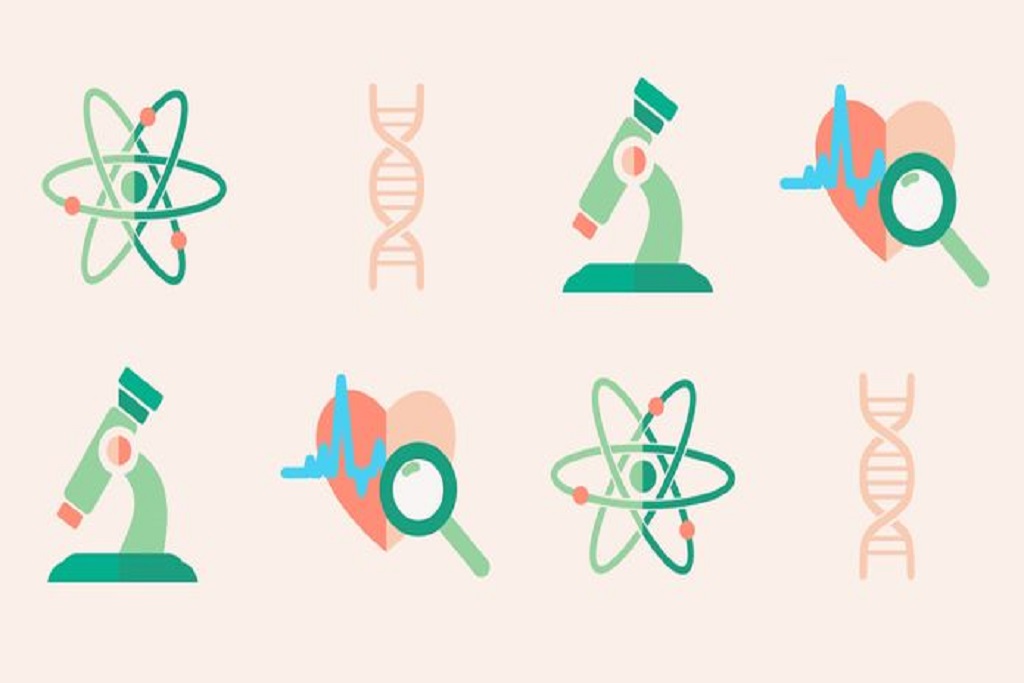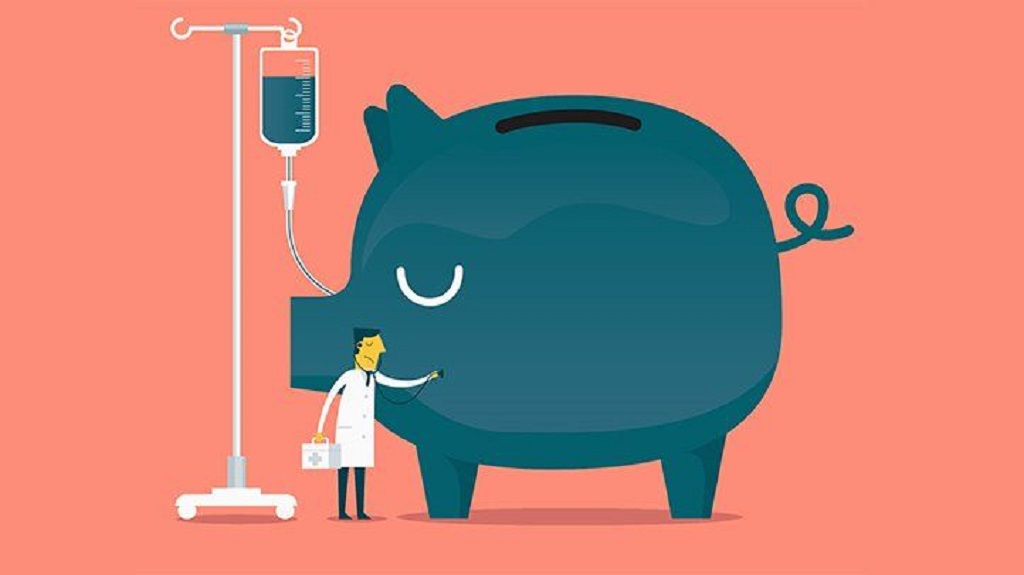Financial Toxicity: Cancer Can Wreak Havoc on Finances
In 2007, Fumiko Chino, MD, lost her husband, Andrew Ladd, to an aggressive neuroendocrine cancer. He was 28 and a PhD candidate in computational science. She was 29 and an art director for an anime film company. They had $25,000 in a 401(k) plan, not a bad sum for a young couple. And he had student health insurance through his university.
But it wasn’t nearly enough. Cancer drugs can be pricey. Ladd’s insurance had a $5,000 yearly limit for prescription drugs. He ran through that in a month. He and Chino began paying for the medication themselves. That included not only his cancer medication but the antinausea drug Zofran (ondansetron) and Lovenox (enoxaparin), an anticoagulant. The cost of those two alone was $300 per day.
Ladd was sick for two-and-a-half years before he died. His bills exceeded $300,000. “I just ignored it because it was just overwhelming,” says Dr. Chino, now 41. Debt collectors came calling almost immediately. One called during Ladd’s funeral. (She later learned that she was not responsible for Ladd’s debts.)
Not surprisingly, the experience had a profound effect on Chino. Three years after Ladd died, she abandoned anime and entered the Duke School of Medicine in Durham, North Carolina. She is now a radiation oncologist at the Duke Cancer Institute and does research on the ramifications of the cost of treatment on people with cancer.
Her experience with her husband, she says, “is the reason I’m doing this. I know exactly what my patients are going through.”
RELATED: Financial Hardships Plague Many Cancer Survivors
The Toll of Financial Toxicity
The money troubles so often associated with cancer care are often referred to as “financial toxicity,” a phrase popularized over the past six years by S. Yousuf Zafar, MD, an oncologist at the Duke Cancer Institute. Chino has worked with him for the past seven years.
The phrase “financial toxicity” intentionally suggests that the financial impact of treatment can be as harmful to patients as the toxicity sometimes associated with cancer chemotherapy.
The research bears this out.
Together, Dr. Zafar and Chino have found that patients often skip meals, spend down savings, and cut back on food and clothing. Many have to quit work, pushing them even further into debt. Some lose their homes. The financial losses trickle down to future generations, who won’t benefit by inheritances.
It’s difficult to know how widespread this problem is, but the consequences can be devastating for the children of someone with cancer. It’s called generational poverty. “A guy spending money he had saved for his kids’ college can affect their education level and opportunities for advancement,” says Chino. The parent’s cancer consumes the resources saved for the child.
The most recent studies also suggest that financial toxicity has more than financial consequences. It can predict a poorer outcome. Patients without money worries have a better prognosis than those who do. Some of Zafar and Chino’s research also suggests that there is a nearly 80 percent increase in the risk of death in those with cancer who were forced to declare bankruptcy.
“What’s shocking about our work is that we only talked to people who have health insurance,” says Chino. “This is happening despite having the thing [insurance] that’s supposed to protect us.”
There is a racial divide, as well. Stephanie Wheeler, PhD, a professor of health policy and management at the University of North Carolina in Chapel Hill, has looked at racial differences in the degree of financial toxicity experienced by patients. “Black patients have a much higher financial burden,” she says.
Having Health Insurance Is No Guarantee
The problem is likely to grow worse as cancer increasingly, in many instances, becomes a treatable or chronic disease.
“Greater than 15.5 million Americans with a history of cancer were alive in 2016, and that number is expected to rise,” concludes a 2019 study by Robin Yabroff of the American Cancer Society.
And the prices they pay for their medicine will continue to increase, as well. The price of cancer drugs now “routinely exceeds $10,000 per month compared with an average of $1,000 per month 20 years ago,” she and her colleagues reported.
Costs are also being shifted to consumers with higher deductibles and coinsurance payments, they reported.
In a study reported in September 2018 at a meeting of the American Society of Clinical Oncology, Dr. Wheeler surveyed 1,513 women with metastatic breast cancer, more than a third of whom were uninsured.
Many women in the study reported refusing or delaying treatment because of its cost, skipping payment of nonmedical bills, and stopping work after being diagnosed. Despite those measures, many were still unable to pay their bills.
“These are patients undergoing a lot of treatment — never-ending treatment,” Wheeler says, referring to the fact that people with disease that has metastasized, or spread, will probably not be cured, and they will likely be on some form of treatment to keep the disease at bay for the rest of their lives. “You can imagine the bills that accumulate when you have an incurable disease,” she says.
In the study, the women without insurance reported the worst material hardship. Oddly, however, it was the insured patients who were most stressed about the cost of their care. “The insured patients expected their insurance was going to do a better job of covering them,” says Wheeler.
The reality, however, is that many insurance plans have high deductibles, requiring patients to cover, say, 20 percent of the costs of care or more. If their cancer care costs $500,000, many patients can’t come close to paying the 20 percent deductible — $100,000.
About half of the women in the study said they had heard from collection agencies. “The hospitals send you three or four bills, and after a 90-day or 120-day period, many hospitals will turn the bills over to a collection agency,” Wheeler says.
RELATED: The High Price of Some Cancer Drugs
One Culprit: Skyrocketing Cancer Drug Prices
Stacie B. Dusetzina, PhD, an associate professor of health policy at the Vanderbilt University Medical Center in Nashville, has looked at patients with chronic myeloid leukemia, now treated with a class of drugs known as tyrosine kinase inhibitors. “These treatments are the best cancer treatments ever developed,” says Dr. Dusetzina. “They have turned that disease from one with a short life span to normal life span.”
Nevertheless, she and her colleagues found that among people with high-deductible insurance plans, a staggering 70 percent were more likely to quit taking their drugs in the first six months because of their high cost. “That was completely shocking, that we had so many people quitting therapy,” Dusetzina says.
She and her colleagues recently did a study published online in October 2018 in the Journal of Oncology Practice. Of 1,988 patients, 524 (26 percent) agreed with the phrase “You have to pay for more medical care than you can afford.” This answer also increased the likelihood they would not take their medication. Financial toxicity, the researchers concluded, is “a major issue in cancer care.”
“This is life or death for people,” she says. “There has to be some balance and some level of sensibility when we’re talking about drugs that preserve or save people’s lives.”
In an April 2013 article on CancerNetwork, Zafar notes that little attention is paid to the cost-effectiveness of new drugs. “Despite its name, the Affordable Care Act does much to increase access to care but little to make care more affordable,” he writes. U.S. regulators and the legislature could take cost-effectiveness into account.
Another question is this: Why are the drugs so wildly expensive in the first place? The pharmaceutical industry argues that it has to charge high prices to cover research and development costs. One study published in May 2016 in the Journal of Health Economics found that these costs were increasing faster than inflation, and that the cost of developing a new drug was $2.6 billion.
Other Reasons for the Astronomical Price Tag for Care
There are other reasons for the rise in the cost of cancer care, according to Zafar:
- The population is aging, and older people have a higher risk of cancer than those who are younger.
- The development of less toxic treatments means that older, frailer people who once could not be treated now have access to cancer care.
- Less toxicity due to new treatments may also encourage some oncologists to overuse drugs, giving them to patients for whom they will likely produce only modest improvement.
Strategies to Help Patients
Financial toxicity is a complex problem with many sources, and it will not likely be entirely solved with one solution. In the meantime, there are strategies that make an impact.
Memorial Sloan Kettering Cancer Center attracted attention recently when it blocked its doctors from using a new Sanofi drug called Zaltrap (ziv-aflibercept) to treat colon cancer because of its expense. Critics at the cancer center said the drug was no more effective than Genentech’s Avastin (bevacizumab). That led to what Zafar calls Sanofi’s “historic” decision to cut the price of the drug in half.
Zafar also believes that patients should be told of costs before beginning treatment.
Wheeler’s research suggests that many patients are unaware of some financial resources available to them. These include transportation assistance, charity care from hospitals, and some relief from drug companies. “But nobody can get through that,” she says. “It’s crazy complex. They [the drug companies] all have totally different systems.”
She and her colleagues began to develop strategies to help patients navigate the financial demands of their diagnosis. They screen patients for their degree of financial distress, triaging them based on their needs and eligibility. Patients report that they finally feel they have an advocate on their side.
They’re also working with oncologists to help them choose drugs that might be cheaper but equally as effective as other more expensive drugs. And they spend a lot of time on insurance appeals.
But these are only partial remedies. “National health reform is essential,” says Wheeler. “That has to happen before we solve the problem.”
RELATED: Shorter Breast Cancer Treatment With Herceptin May Be Just as Effective
Resources for Patients
Getting the best possible healthcare at an affordable price is just one of the things that people with cancer and survivors need to do. They have to think about keeping their jobs, for example, not only to maintain their income but also to maintain their health insurance, if they get it from their employers.

Places to get help:
- Cancer and Careers offers numerous free publications relating to interviewing, networking, job searches after cancer, and knowing your legal rights. It will also help you look for a job online and review your résumé and your profile on the social media site LinkedIn.
- CancerCare offers counseling, support groups, and financial assistance.
- Medical information is available from PubMed, a medical journal search site, and such websites as WebMD.com.
- The Patient Access Network Foundation offers copay assistance to people with cancer who have insurance but can’t afford the out-of-pocket costs.
- The Livestrong Foundation helps people find clinical trials that could help them and offers various publications in English and Spanish.
Source: Everyday Health Author: Paul Raeburn
